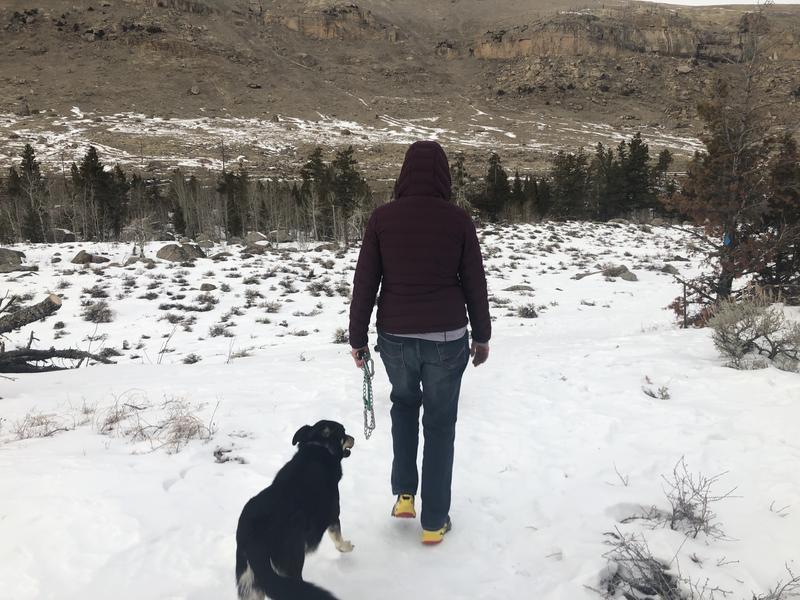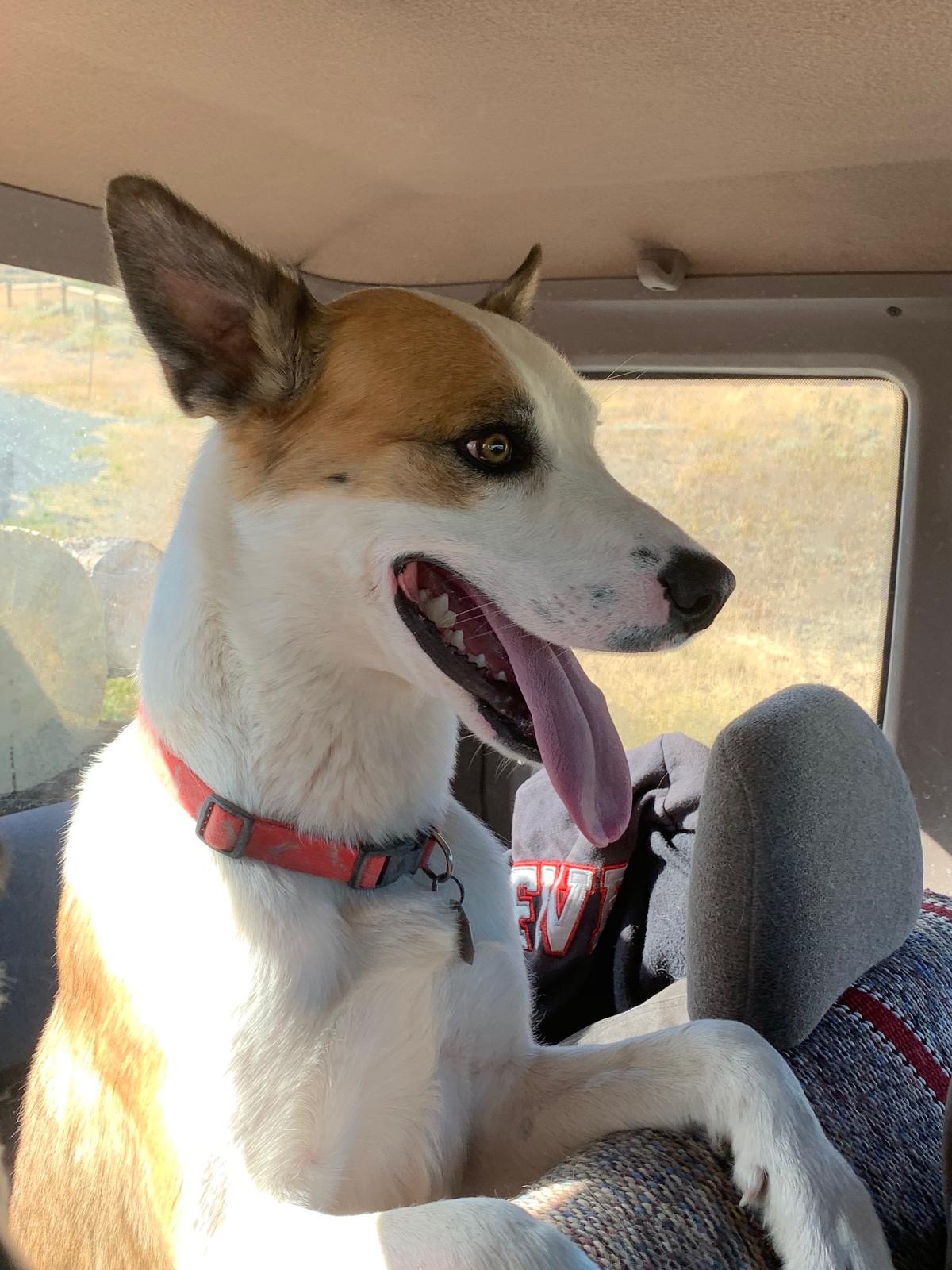Snaring Death Of Family Dog Raises Questions About Trapping On Public Lands
 Karen Zoller walks with her dog, Macy, a public trail in the Shoshone National Forest.
Karen Zoller walks with her dog, Macy, a public trail in the Shoshone National Forest.
SAVANNAH MAHER
****Hear video on link below!
Karen Zoller’s two rescue dogs, Macy and Izza, love to run and explore. So, she takes them to public trails around Fremont County where she can let them off leash.
But lately, she’s had to be careful when she takes her dogs out on public land. On a recent walk in Shoshone National Forest, she wondered aloud whether the trail was safe.
“You can trap in a national forest, so I don’t know,” she said. “I haven’t called anyone and asked, though.”
In early January, Zoller took her one year-old mutt Mac out on a public trail north of Ocean Lake, just outside of Pavillion. About half a mile into their run, Mac strayed off the trail a bit.
“And then boom, I saw Mac’s body flip,” Zoller remembered.
Mac had been caught in a snare, which had been placed there by a local trapper.
“It was a neck snare, and I couldn’t [release] it. He was in respiratory distress and I was trying to undo the snare, undo the snare, and he was just going down, down,” Zoller said. “He died right there in my arms and I couldn’t do anything.”
Zoller was traumatized. She called her husband to come to the trail and help, but he couldn’t get the snare to release, either. So, they had to load Mac’s body into their truck with the snare still attached.
They called the Fremont County Sheriff’s Office, and an officer came to their home to conduct an investigation.
“He looked at the situation, looked at the snare, took some pictures and said that everything was legal,” Zoller said.
Everything from the trap’s type—a spring-loaded power snare—to its location not far from a popular hiking trail, was above board.
In Wyoming, you need a license and a permit to trap or snare animals on public land. But you don’t have to tell any agency what kind of trap you’re using, or even where you’re putting it. There’s also no buffer zone around high-traffic recreation areas.
The day after Mac died, Zoller posted on a local trail conditions Facebook group about what happened. Debate ensued, and some outrage. Lots of people said they weren’t aware that traps were a risk on their favorite public trails.
In response, the Wyoming Game and Fish Department’s office in Lander partnered with a local animal shelter and the Wyoming Trappers Association to host a workshop where people could learn how to release a trap or snare if their pet got caught in one.
Before the workshop started, Game and Fish Public Information Officer Rene Schell advised the crowd of 50 or so people that the purpose of the workshop was trap release education.
“We understand that a lot of you have some concerns. But tonight, we’re not here to debate trapping regulations,” Schell said.
Still, the local trapper who volunteered to lead the workshop fielded some pointed questions from attendees.
“I’d like to stay on track with the trap releasing, I really would,” Alan Sinner said when things started to get heated. “Can we all just kind of cool down a little bit? Is that okay with everybody? Can we kind of move on with the trap part?”
Soon after, Sinner was passing around different kinds of snares, giving folks a chance to tinker with their release mechanisms and snap them with wire cutters. Using a giant stuffed dog, attendees practiced techniques for calming a dog down while pressing on the levers of a foothold trap to release it.
Phil Phister of the Wyoming Trapper’s Association was happy with the event’s strong turnout. He said he believes that if you’re going to walk your dog on public land in Wyoming, especially without a leash, it’s your responsibility to learn how to release a trap.
“When everybody is doing their due diligence, I think things can be taken differently. And things can be handled differently as well, without regulations,” Phister said.
And that’s one thing Phister doesn’t want to see- more regulations on trapping.
Phister’s own trapping dog, Franklin, was waited patiently in his truck during the workshop. When asked how he keeps Franklin safe on public land, Phister reached into a seatback pocket and, with a laugh, pulled out Franklin’s leash.
“That’s one thing that I like to do, is lead by example,” Phister said.
But some people in Fremont County aren’t on the same page. Karen Zoller and other concerned pet-owners have been meeting with an advocacy group, called Wyoming Untrapped, and reaching out to lawmakers about tightening restrictions on trapping in Wyoming. But the Wyoming Game and Fish Commission isn’t scheduled to sit down and review Wyoming’s trapping regulations until 2022.
For now, folks are arming themselves with heavy duty wire-cutters and as much preventative education as possible. A month after losing her dog, Karen Zoller is glad for that silver lining. But she said running with her dogs will never be quite the same.
“You get this sense of living in fear. You know, I don’t want to sit in my house and live in fear, so I have to take those baby steps,” Zoller said. “So, we went back to [Ocean Lake,] and, you know, I don’t want to go alone so I went with my husband. And we have the wire cutters every time, because you don’t know if there are snares out there.”
Have a question about this story? Contact the reporter, Savannah Maher, atsmaher4@uwyo.edu.




